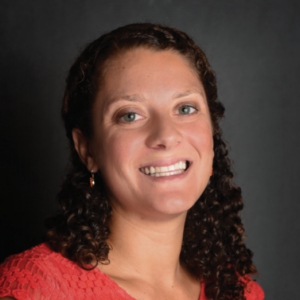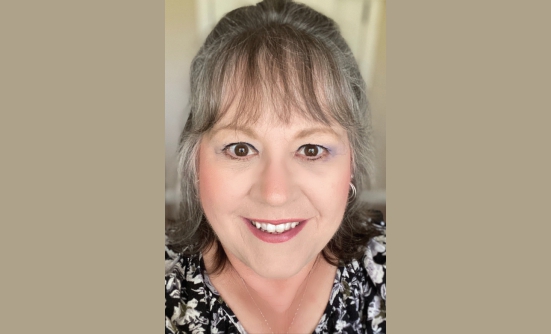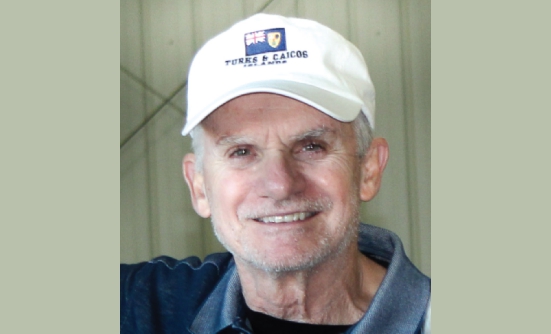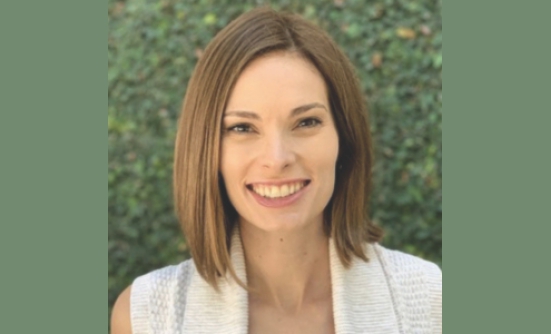
Visualization is the use of one’s imagination to form experiences in the mind to achieve a goal, such as relaxation, coping, or spiritual growth. When practicing visualization, you can imagine sights, sounds, tastes, smells, and/or feelings to create a vivid, tangible experience.
You can practice visualization on your own or be led through instructions by a practitioner or recording, which is known as guided imagery.1
Visualization can be a valuable resource for patients with cancer who want to cope with the psychological strain of cancer. Studies show that visualization is associated with increased comfort, decreased anxiety, decreased fear of death, and decreased spiritual struggle.2,3 Visualization is used to complement, not to replace, medical treatment.
As a chaplain, I often encourage a wide variety of patients to practice visualization. Patients undergoing chemotherapy and radiation often find the practice of visualization powerful, especially if they feel anxious about their treatment, or if they are having difficulty coping with cancer.
Picture This
Some patients choose to visualize calming scenes, such as a beach where they vacation, or an imaginary location that feels calming. Other patients choose to imagine the chemotherapy demolishing the cancer. Others choose to picture God surrounding them. It is most important that people use imagery meaningful to them.
I started recommending visualization even more frequently when I witnessed how powerfully it transformed the experience of one of our patients, Kari Dawson. I met Kari a few years ago. As a patient with cancer and a Christian, Kari draws on a wealth of spiritual practices.
When we first met, she was understandably feeling troubled by the cancer diagnosis and the treatment that lay ahead. But she did not let anxiety overtake her. Instead, she used spiritual practices—especially visualization—to guide her through the treatment. Imagery became a powerful part of her experience that was central to her healing and spiritual growth, as she describes below.
Kari’s Story: My “Spirited” Animal
On my first day of chemotherapy, I sat in the infusion chair anxious, scared, and battling a hopelessness that tested my faith. My treatment for advanced breast cancer entailed getting through 16 sessions of chemotherapy infusions. A good friend and a cancer survivor counseled me to visualize the chemotherapy working and destroying the cancer in my body. But how could I positively visualize a treatment that would make me nauseous, bald, and perhaps even lead to permanent nerve damage?
Soon, my infusion nurse administered the first chemotherapy drug. As I watched the slow drip of the liquid through the IV, I felt spacey and discombobulated from the drugs given to me before the chemotherapy. I struggled to meditate quietly, imagining the chemotherapy demolishing my cancer. The imagery was difficult, until an unstoppable wolf burst into my mind. Not just any wolf, but the most famous wolf in the world, O-Six.
Last summer, my husband, son, and I went on a whirlwind tour of Grand Teton and Yellowstone National Parks. In Yellowstone, we enjoyed the rare privilege of spotting a wild wolf in the park. This black male guarded an elk carcass, while waiting for his pack to join him. I watched him, eager to learn more about these creatures, and then I read Nate Blakeslee’s book American Wolf: A True Story of Survival and Obsession in the West.
In the book, Blakeslee tells the story of one of Yellowstone’s wolves known as O-Six, a charismatic alpha. O-Six was unusually large for a female. Wolf watchers spoke of her as a “once-in-a-generation-hunter.”4 She was legendary for her ability to single-handedly take down an elk 5 to 6 times her size.
O-Six roared into my chemotherapy meditation with the speed of a freight train. The woozy haze of the drugs slipped away, and the big gray wolf went to work. She raised her nose in the air, sniffed, lowered her head, and began the hunt to take down my cancer. In my visualization, her surroundings became a snow-covered valley, and O-Six’s gray coat was easy to spot against the pure white background. I felt the cold snow under her paws as she ran, and shared her exhilaration and the hunger in her belly.
I soon realized that O-Six was not alone. Behind her, spread out in a V-formation were the members of her pack—black and gray coats glistening against the morning snow. They moved together like a well-oiled, precise machine behind their alpha. O-Six, sighting her cancerous prey ahead, bared her fangs, leaped, and began to tear at the writhing, black mass. The cancer did not stand a chance. The sound of wolves’ howls rang through my ears.
After my initial visualization of the wolves, I took photos of O-Six and her pack with me to every chemotherapy appointment, which helped me to focus on the powerful images showing the destruction of my cancer.
During one infusion, Petra Sprik (our hospital chaplain) visited me and asked about the photos. She shared with me an old Cherokee legend that she finds particularly powerful—the tale of “The Two Wolves.”5
In this story, an old Cherokee tells his grandson about an interior battle he fights, which is fought inside every person. The struggle is between a good wolf and a bad wolf. The good wolf represents positive qualities such as peace, love, hope, and serenity. The bad wolf represents negative traits such as self-pity, guilt, and resentment. Hearing this, the grandson asked his grandfather which wolf will succeed. The grandfather simply imparts the wisdom that it is “The one you feed.”5

I finished chemotherapy more than a year ago, but my good wolf has not left me. O-Six’s howl resonated through me while I was ringing the bell to celebrate the end of chemotherapy, and again 4 months later, when I sounded the bell after completing radiation therapy.
Although my cancer treatments have ended, my morning devotion and prayers always include a visualization involving O-Six. In this visualization, I picture a black, cancerous mass, a possible remnant in me or in someone I know with a cancer diagnosis. O-Six howls to summon the pack, and we are off, running through the valley and chasing down the sickening mass until it is caught, ravaged, and devoured.
During these morning meditations I feed my good wolf. Although I still carry anger, resentment, fear, and self-pity about having cancer that I could feed to my evil wolf, I strive to channel my energy into faith, hope, warrior-courage, and strength for my good wolf, O-Six.
Visualization Can Relieve Anxiety
Kari’s story attests to how visualization of O-Six helped her fight fear and anxiety. In her telling, you see how her mind called forward tangible sensory details—sights, sounds, and feelings—to help her connect to powerful, healing images. She used these images to reduce her anxiety and help her cope with cancer treatment.
Perhaps O-Six could help you on your journey, or perhaps there are other images that beckon you. The key is that the imagery be meaningful to you.
You may need to picture cancer being destroyed. You may need a calming scene. You may need to picture part of your spiritual journey.
If you need some guidance during your first practices, the Health Journeys website (www.healthjourneys.com) provides cancer-specific guided meditations. This website is a good place to start. You may also want to look at the Canadian Cancer Society’s website (www.cancer.ca) which describes 2 methods of guided visualization: the Simonton method and the palming method. Or, you may find that your personal powerful visualizations burst onto the scene.
References
- Memorial Sloan Kettering Cancer Center. Guided imagery. Updated September 16, 2021. www.mskcc.org/cancer-care/integrative-medicine/therapies/guided-imagery.
- Roffe L, Schmidt K, Ernst E. A systematic review of guided imagery as an adjuvant cancer therapy. Psycho-Oncology. 2005;14(8):607-617.
- Manzini CSS, Damasceno VAM, Elias ACA, de Souza Orlandi F. The brief psychotherapeutic intervention “relaxation, mental images and spirituality”: a systematic review. Sao Paulo Medical Journal. 2020;138(3):176-183.
- Blakeslee N. American Wolf: A True Story of Survival and Obsession in the West. New York: Penguin Random House; 2017, p. 69.
- First People. Two Wolves: A Cherokee Legend. www.firstpeople.us/FP-Html-Legends/TwoWolves-Cherokee.html.
Key Points
- Visualization is the use of one’s imagination to form experiences in the mind to achieve a goal, such as relaxation, coping, or spiritual growth
- Studies show that visualization is associated with increased comfort, decreased anxiety, decreased fear of death, and decreased spiritual struggle
- Focusing on certain sensory details, such as sights, sounds, smells, and feelings, can help your mind manifest a powerful vision
- Some patients with cancer may benefit from visualizing calming scenes, while others may benefit from picturing the cancer being destroyed
Patient Resources
Health Journeys
Guided meditation for cancer
www.healthjourneys.com/guided-meditation-for-cancer-patients
Canadian Cancer Society
Guided imagery
cancer.ca/en/treatments/complementary-therapies/guided-imagery















